7M2 English
Section outline
-
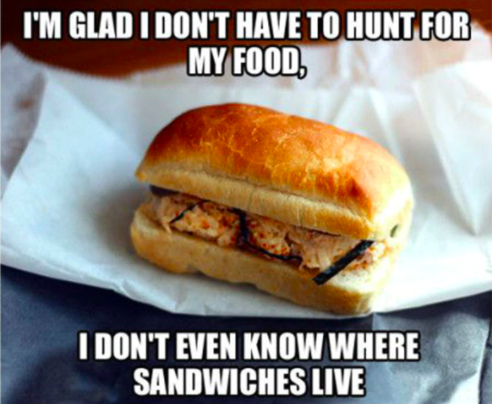
Mauria to pono
Believe in yourself
Kia ora, and welcome to your English course page for 2021. My name is Miss Wright and I will be your English teacher this year. This page is where you will be able to find all the necessary information you will require for your English course. All tasks and assessments will be placed here as well as additional lesson notes and resources. Please make it a habit to check this page at the start of each week, this will ensure that you are aware of any expectations we may have of you at that time.
Mountains staff really hope that your time here at MHJC will be full of fun and challenging activities that will see you grow as a learner. Enjoy this year and if there are any queries do come and see me or feel free to email me - swright@mhjc.school.nz
Our context this term is Cultural Food, and we will be working alongside MAO looking at traditional kai, including cooking techniques and recipes. What cultural food relates to you as an individual, a member of a family, community and culture?
-
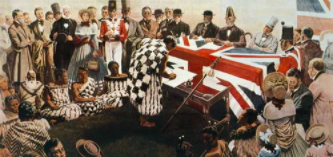
He aha te mea nui o te ao. He tāngata, he tāngata, he tāngata
What is the most important thing in the world? It is people, it is people, it is people.
Kia ora. Welcome back to week two at MHJC. I hope you had a good first week, meeting your teachers and classmates and finding your place in Mountains Whanau. Please remember we are all here to help you if you feel lost, or unsure. Ask for help - any staff member or student will be more that happy to support you. This week, we are going to continue getting to know each other, and settle into our timetables and routines. One of the ways people share who they are and what they stand for is food. Have a think about what your favourite food is, what represents you, your whanau and your culture. If you had to offer a food item to a stranger that introduces 'you' what would it be?
Success Criteria: I can/have...
- List food items that are important to me, my whanau and my culture
- Describe at least 2 cultural food items
- Explain the process for making the food item
- Discuss any cultural practices or traditions around your chosen food items
Activities:
- Do Now - Formal Language Activity - Proper Nouns
- Brainstorm food items (in books)
- Identify 4 food items you feel passionate about
- In small groups discuss at least 2 items (each)
- Create a venn diagram illustrating the similatities and the difference of your food item with a buddy (in books)
- Research the method for creating the food item (make notes in books)
- Research the cultural practices around your chosen food items (make notes in books)
Homework:
Discuss your chosen food items with your whanau - are there any other cultural practices/traditions you need to consider?EXPLORE / TŪHURA learning intentions:
- We are EXPLORING food items and how these connect to our culture
- We are EXPLORING graphic organisers that help us organise and classify our ideas
- We are EXPLORING conventions of recipe writing
-
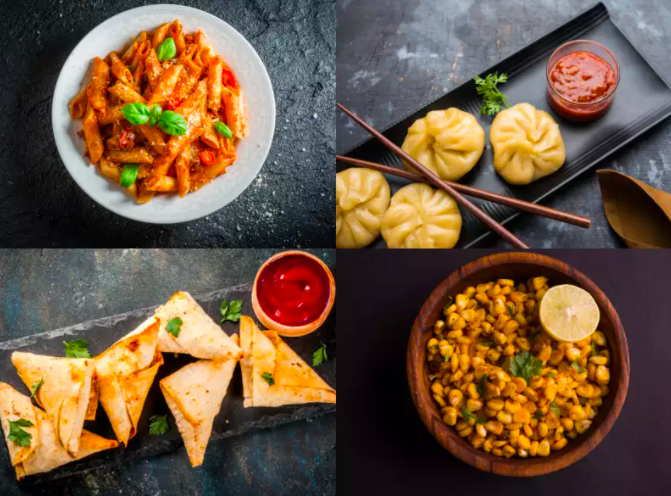
Ki taku whanau. Me nga hoa. Me te kai. Kia Ora
Our family, friends and food. We say thank you
Kia ora. What a busy start to the term we have had. This week we are going to continue what we started last week, looking at the foods we value in our families and our cultures. We are going to look at the conventions of writing that are associated with instructions or procedures and research the way our chosen food items are prepared.
Success Criteria: I can/have...
- List food items that are important to me, my whanau and my culture
- Describe at least 2 cultural food items
- Explain the process for making the food item
- Discuss any cultural practices or traditions around your chosen food items
- Do now: Collective Nouns (Google Classroom - will be available later this week when we are back at school - I need to scan the document)
- Identify 4 food items you feel passionate about
- In small groups discuss at least 2 items (each)
- Create a venn diagram illustrating the similarities and the difference of your food item with a buddy (in books)
- Research the method for creating the food item (make notes in books)
- Research the cultural practices around your chosen food items (make notes in books)
Homework:
Discuss your chosen food items with your whanau - are there any other cultural practices/traditions you need to consider? - Can they help you with the method for making the food item?EXPLORE / TŪHURA learning intentions:
- We are EXPLORING food items and how these connect to our culture
- We are EXPLORING graphic organisers that help us organise and classify our ideas
- We are EXPLORING conventions of recipe writing
-

Ki taku whanau. Me nga hoa. Me te kai. Kia Ora
Our family, friends and food. We say thank you
Kia ora. This week we are going to continue what we started last week, looking at the foods we value in our families and our cultures. We are going to look at the conventions of writing that are associated with instructions or procedures and research the way our chosen food items are prepared.
Success Criteria: I can/have...
- Describe at least 2 cultural food items
- Explain the process for making the food item
- Discuss any cultural practices or traditions around your chosen food items
- Do now: Collective Nouns (Google Classroom)
- Research the method for creating the food item (make notes in books)
- Research the cultural practices around your chosen food items (make notes in books)
Homework:
Discuss your chosen food items with your whanau - are there any other cultural practices/traditions you need to consider? - Can they help you with the method for making the food item?EXPLORE / TŪHURA learning intentions:
- We are EXPLORING food items and how these connect to our culture
- We are EXPLORING graphic organisers that help us organise and classify our ideas
- We are EXPLORING conventions of recipe writing
-
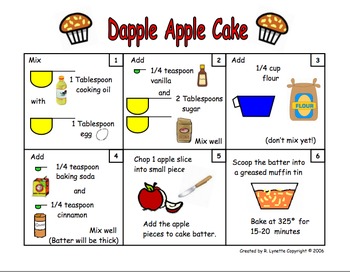
Ka mate kāinga tahi, ka ora kāinga rua
When one door closes another will open/ have a back up plan
Kia ora. I chose this weeks whakatauki because it speaks of having a back up plan or being flexible to changing situations. Boy, are we getting really good at that! I am going to put two formal language sheets onto google classroom this week. Please give them your best shot. Remember, our focus is using correct grammar and punctuation - while the answers are important, they are not as critical as capital letters, full stops and recognising the parts of speech we are focussing on. I also have another challenge for you - though this is more dependent on your bubble and access to supplies, and that is to create a pictorial or visual recipe. You can see I have used one as an image at the start of this week. You could use clip art, or even better, you could cook the recipe yourself and take photos of the process. It would be great if you could use this to support your procedural writing - but please, if this is not something that is easy to do with the resources you have at home, then clip art/google images are fine. I will let you all know about a class google meet early next week, and give the code and time to join. (I will publish this on google classroom/MHOL and email it to you)
Success Criteria: I can/have...
- Explain the process for making a food item
- Discuss any cultural practices or traditions around your chosen food items
- Identify Imperative verbs and use appropriately in my writing
Activities:
- Action Verbs (Google Classroom)
- Agreement of Subject and Verb (Google Classroom)
- Write and illustrate a recipe for a favourite food iem (visual or pictorial recipe)
Homework:
Everything...............EXPLORE / TŪHURA learning intentions:
- We are EXPLORING food items and how these connect to our culture
- We are EXPLORING graphic organisers that help us organise and classify our ideas
- We are EXPLORING conventions of recipe writing
- Explain the process for making a food item
-
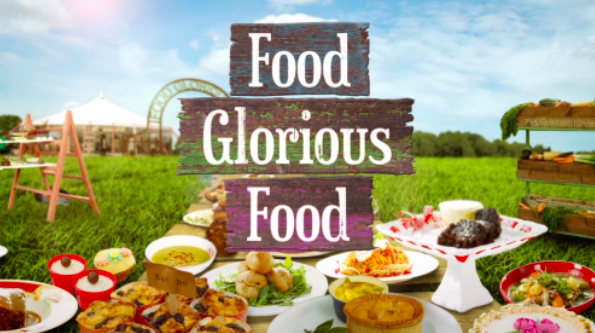
Mā te tuakana te teina e tōtika, Mā te teina te tuakana e tōtika
The older will lead the younger and the younger will lead the older
Kia ora. It was great to see you all online over the past week, and I have seen some fantastic work on recipes already. This week, I am going to ask you to hand in your English books at the end of our first session, so that I can mark your work while you are at camp. We are going to look at the traditions and beliefs around the food items you have identified, and work on writing a factual description of these traditions. We have a lot to do - but only one session this week to do it, but I am sure, together, we will achieve.
Success Criteria: I can/have...
- Research the history and traditions of my identified food
- Make dot/jot notes to record my research
- Use a planning tool to plan my writing
- Draft a factual description
Activities:
- Unpacking of factual description examples
- Research skills - KWL Chart
- Research Skills - Key Word Identification
- Research Skills - Dot-Jot notes
- Hand in Formal Language work
Homework:
Go to camp, have fun, get to know each other and your year 10 leaders!EXPLORE / TŪHURA learning intentions:
- We are EXPLORING food items and how these connect to our culture
- We are EXPLORING graphic organisers that help us organise and classify our ideas
- We are EXPLORING conventions of recipe writing
-

Kia mau ki te tokanga nui a noho.
There is no place like home.
Kia ora. I hope you all had a wonderful time at camp. You were lucky with the weather - I look forward to hearing about the activities you enjoyed (and the meals you shared). This week, we are going to continue working on our research skills and will be researching the food item we have identified. I will also share the assessment task with you in our second session this week.
Success Criteria: I can/have...
- Research the history and traditions of my identified food
- Make dot/jot notes to record my research
- Use a planning tool to plan my writing
- Draft a factual description
Activities:
- Do now: Subject/Verb Agreement (Google Classroom)
- Research skills - KWL Chart
- Research Skills - Key Word Identification
- Research Skills - Dot-Jot notes
- Draft factual description
Homework:
Do now activity
FOCUS / ARONGA learning intentions:
- We are FOCUSING on Research Skills as we select a traditional food item
- We are FOCUSING on choosing a writing frame to help us describe our traditional food
- We are FOCUSING on our technical accuracy in our writing
-

He kai kei aku ringa
There is food at the end of my hands
Kia ora. It was wonderful to see you all back from camp last week. That is the first time we have been at school for 2 weeks in a row all year - I am proud of the way you are all coping with a new school, a new way of learning and the disruption of home learning at the same time. Ka Pai! This week, we are going to be working on your assessment task. This is individual work, but we will be working on it in classtime and will upload it in class next week, so I can support you through the process. You may have to do some work at home to get it completed. I am excited to see what you produce. The assessment task instructions are loaded at the bottom of this weeks course page, and the assessment task submission link will be on next week's page.
Success Criteria: I can/have...
- Use a writing frame to structure my writing
- Use language appropriate to my audience
- Use gramatic conventions and spelling patterns appropriately
Activities:
- Do Now - Formal Language - Forming Verbs (Google Classroom)
- Complete Dot-jot notes on chosen food item
- Draft history and tradition paragraph(s)
- Draft Recipe
- Proofread and Edit work
- Produce final version of writing
Homework:
Work on drafting, proofreading and editing of assessment taskFOCUS / ARONGA learning intentions:
- We are FOCUSING on Research Skills as we select a traditional food item
- We are FOCUSING on choosing a writing frame to help us describe our traditional food
- We are FOCUSING on our technical accuracy in our writing
-

Nā tō rourou, nā taku rourou ka ora ai te iwi.
With your food basket and my food basket the people will thrive.
Kia ora. This week we are going to upload assessments as a class. You need to have completed your recipe and paragraph(s) by this Thursday so we can upload together. You will have classtime this week to work on your document, but may also have to complete at home. We have a short week this week as Friday is Good Friday - followed by a short week next week as Monday and Tuesday are also no-school days (Easter Monday and school holiday Tuesday). Friday the week after is our community fun day, so the pressure is really on us to get our work completed. Whatever you do as a family over the Easter break, I hope you have a fantastic time and enjoy Level One in Aotearoa.
Success Criteria: I can/have...
- Use a writing frame to structure my writing
- Use language appropriate to my audience
- Use gramatic conventions and spelling patterns appropriately
Activities:
- Do now: Formal Language Verbs - Tense (Google Classroom)
- Draft history and tradition paragraph(s)
- Draft Recipe
- Proofread and Edit work
- Produce final version of writing
- Upload task on Thursday!
Homework:
Assessment Task One - Final version ready for upload on ThursdayPLAN & DO / WHAKAMAHI learning intentions:
- We are PLANNING our writing so that we can apply the conventions of procedural writing to our recipe and demonstrate our research skills in the construction of our factual description.
-

He iti te mokoroa nāna te kahikatea i kakati
Even the small can make a big impact on the big
Kia ora. I hope you all had a wonderful Easter break and took the time to relax after submitting your English assessment last week. It will take me a few weeks to grade them all, so please don't ask me when you are getting the grades back. I will do my best to be prompt. This week, we have another very short week. We have timetabled classes Wednesday and Thursday (though session one on Wednesday will be in your Learning Advisor groups) and on Friday we have Learning Advisor followed by community fun day - hopefully you will have more information about this to follow. In English, we are going to complete quite a bit of formal language work for some people (well done those of you who are up to date) and look at some of the rules we need to follow when changing verb tense.
Success Criteria: I can/have...
- Complete formal language work using conventions of grammar
- Use correct sentence punctuation in my writing
- Use a rule to help when adding suffixes to verbs
Activities:
- Formal Language - Verb Tense # 2 (in google classroom)
- Complete earlier formal language sheets
Homework:
Read a book :-)REFLECT / WHAIWHAKAARO learning intentions:
- We are REFLECTING on any problems or issues we had when working on our recipes and descriptions, and evaluating our strengths when overcoming these.
-
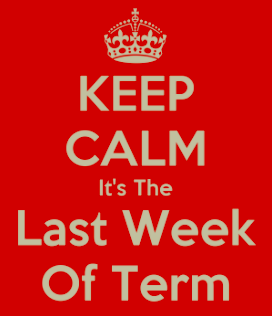
Ehara taku toa, he takitahi, he toa takitini
Success is not mine alone, it is due to the work of all of us
Kia ora. I hope you had a good day on Friday - what was your favourite activity (queuing at the food trucks is NOT an activity!). I enjoyed watching the bubble football and the cultural performances! This week, we are going to continue working on procedural text by following instructions. We will be hands-on making origami and folding napkins. If you have any great ideas of any instructions we can follow that do not need too many resources please share them with me.
Success Criteria: I can/have...
- Follow a set of instructions to achieve a goal
- Help another person follow instructions
- Reflect on the process and suggest ways to improve instructions
Activities:
- Do now - Formal language - google classrom
- Bus stop activities - following instructions
Homework:
Read a book -

Mā te huruhuru ka rere te manu
With feathers the bird can soarKia ora, I hope you all had a relaxing term break and are refreshed for the term ahead. This term we are going to look at film techniques - camera angles, shots and movements and how to create short videos.
Success Criteria: I can/have...
- Identify a range of camera angles
- Identify a range of camera shots
- Identify a range of camera movements
Activities:
- Do Now - Formal Language (Google Classroom)
- Create a visual glossary of film techniques (angles, shots and movements)
Homework:
Read a book -
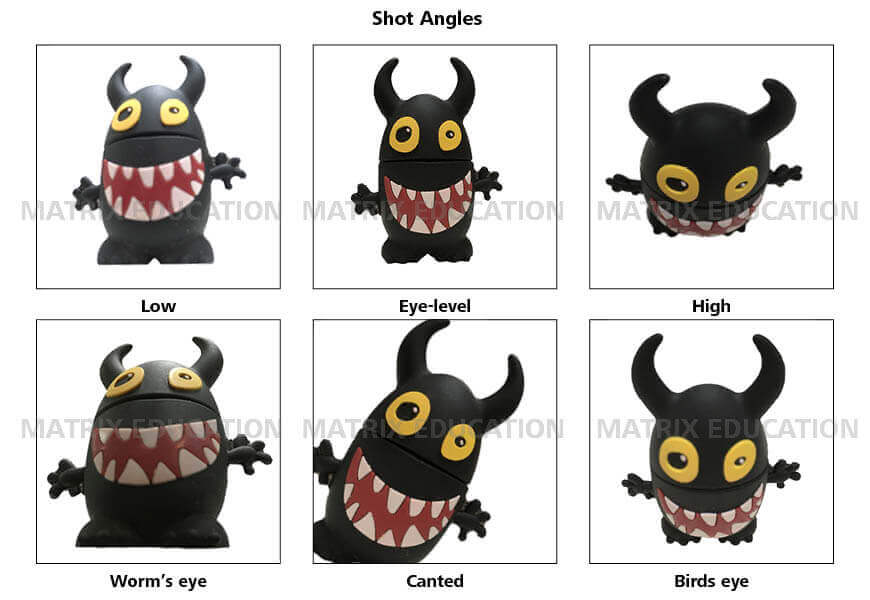
He oranga ngākau, he pikinga waiora
Positive feelings within you enhances wellbeing
Kia ora. This week we are going to continue exploring film techniques. You will be working on your slideshow glossaries, and we will watch a few short films/clips to see how film techniques are used to emphasise the message of the film
Success Criteria: I can/have...
- Identify a range of camera angles
- identify a range of camera framing
- identify a range of camera movements
Activities:
- Do now - formal language (Google classroom)
- Continue working on slide show glossaries
Homework:
Read a bookEXPLORE / TŪHURA learning intentions:
- We are EXPLORING film techniques to recognise how visual language connects with it's audience
- We are EXPLORING specific devices used in visual language to deliver messages
-
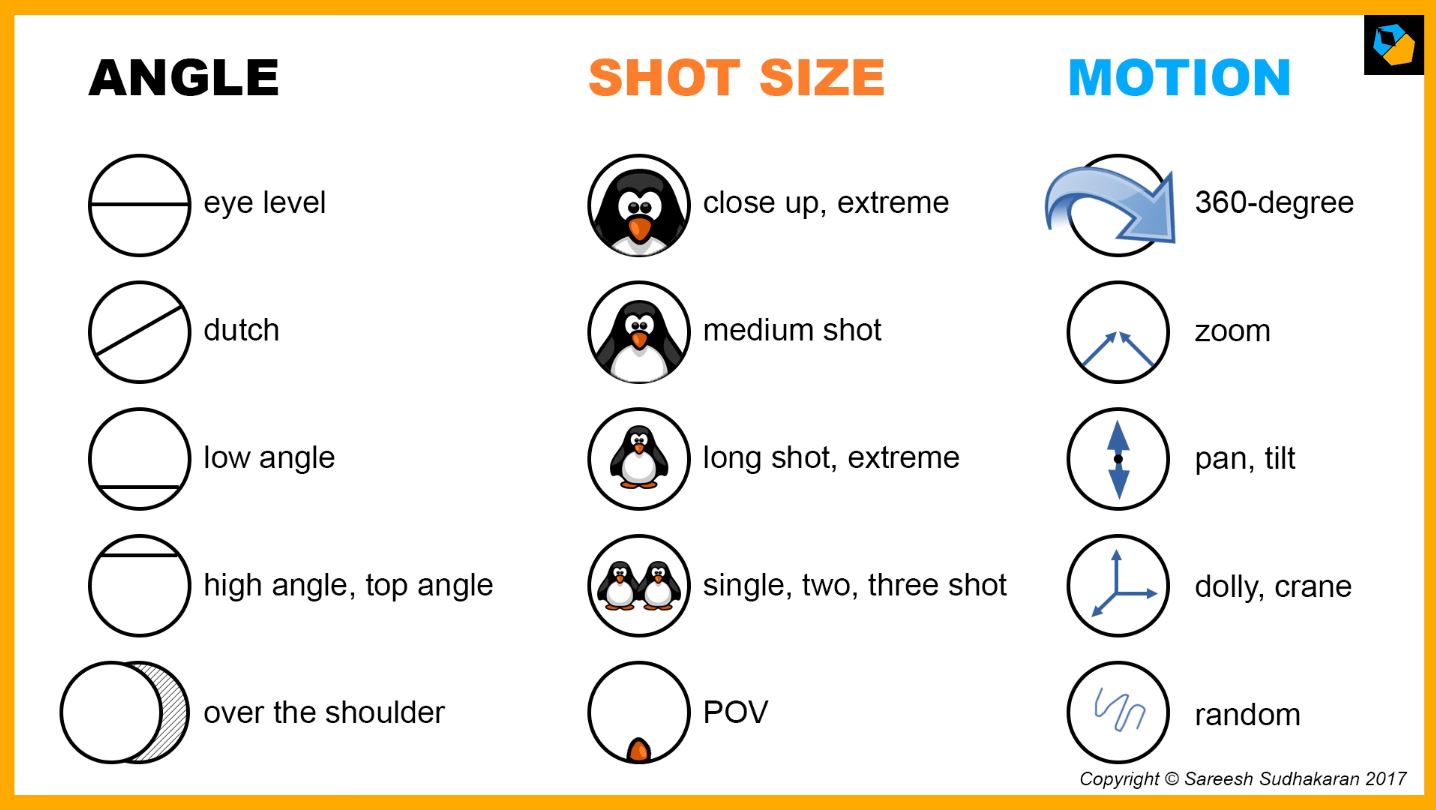
Ēhara tāku toa i te toa takitahi, ēngari he toa takitini
My valour is not that of the individual, but that of the multitudes.
Kia ora. It's kindness week. What can you do to spread kindness? Try and do something every day that shows kindness to someone else, and hopefully you will also be the recipient of someone elses kindness. This week we are going to complete our slideshows on film techniques and view some short films to see how these techniques are used together to tell an interesting story.
Success Criteria: I can/have...
- Identify a range of camera angles
- identify a range of camera framing
- identify a range of camera movements
Activities:
- Do now - Formal language (Pronouns - Google Classroom)
- Complete slideshow on film techniques
- View a short film
Homework:
Read a book
EXPLORE / TŪHURA learning intentions:
- We are EXPLORING film techniques to recognise how visual language connects with it's audience
- We are EXPLORING specific devices used in visual language to deliver messages
-

Whaowhia te kete mātauranga
Fill the basket of knowledge
Kia ora. What a great kindness week we had last week. My challenge to you all is to continue with the words and actions you started last week. Lets make every week kindness week. This week we are going to continue with the storyboard busstop activity we started last wek.
Success Criteria: I can/have...
- Identify a range of camera angles
- identify a range of camera framing
- identify a range of camera movements
Activities:
- Do Now - Formal Language (Google classoom)
- Bus stop activity - storyboarding
Homework:
Read a bookFOCUS / ARONGA learning intentions:
- We are FOCUSING on identifying an important moment in a text and choosing appropriate film techniques to describe the scene.
- We are FOCUSING on explaining the effect these film techniques have on the audience.
-

He kokonga whare e kitea, he kokonga ngākau e kore e kitea
A corner of a house may be seen and examined; not so the corners of the heart
Kia ora. We seem to have settled into winter. I hope you had a safe and dry weekend! It's probably time to hunt out the thermals, umbrellas and gloves for your travels to and from school! This week, we are going to complete the storyboards we are doing as a group, you will then be working independently to complete a storyboard so make sure you can identify and use a range of camera angles, camera framing, camera movements and sounds.
Success Criteria: I can/have...
- Identify a range of camera angles
- identify a range of camera framing
- identify a range of camera movements
Activities:
- Do now - formal language (google classroom)
- Complete group storyboards
Homework:
Read a bookFOCUS / ARONGA learning intentions:
- We are FOCUSING on identifying an important moment in a text and choosing appropriate film techniques to describe the scene.
- We are FOCUSING on explaining the effect these film techniques have on the audience.
-
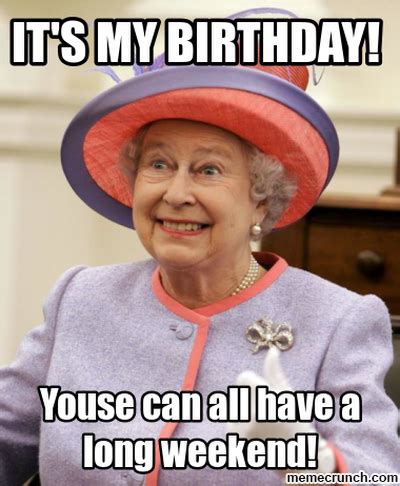
Nau i whatu te kakahu; he taniko taku
You wove the cloak, I made the border
Kia ora. Another Queen's Birthday honours list and still no mention of my name...... ah well, there's always next year. :-). This week, you are going to use your knowledge of film techniques to create your own storyboards. You will have the choice of your own story moment, retelling a story moment created by someone else (Luke, I am your father) or using a school journal story to inspire you. I am looking forward to seeing what you come up with!
Success Criteria: I can/have...
- Use a range of camera angles
- Use a range of camera framing
- Use a range of camera movements
Activities:
- Do now - formal language (google Classroom)
- Individual storyboards
Homework:
Read a book!FOCUS / ARONGA learning intentions:
- We are FOCUSING on identifying an important moment in a text and choosing appropriate film techniques to describe the scene.
- We are FOCUSING on explaining the effect these film techniques have on the audience.
-

Ka pū te ruha, ka hao te rangatahi.
The old net is cast aside, while the new net goes a-catching.
Kia ora. Well done on getting halfway through the term. This week we are going to continue working on our storyboards - remember I want to see you use a range of camera angles, framing and camera movements, as well as diegetic and non-diegetic sound to tell your small moment of the story.
Success Criteria: I can/have...
- Use a range of camera angles
- Use a range of camera framing
- Use a range of camera movements
Activities:
- Do now - formal language (google classroom)
- Continue storyboarding
Homework:
Read a book!FOCUS / ARONGA learning intentions:
- We are FOCUSING on identifying an important moment in a text and choosing appropriate film techniques to describe the scene.
- We are FOCUSING on explaining the effect these film techniques have on the audience.
-
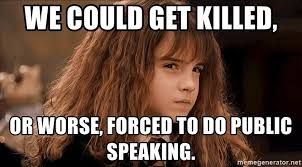
He aha te kai ō te rangatira? He Kōrero, he kōrero, he kōrero.
What is the food of the leader. It is knowledge. It is communication.
Kia ora. This week, you are going to complete your storyboards. You are also going to complete your asTTle testing. We are also going to start looking at speeches. You will have the remainder of the term to select, research and draft your speech and the holiday break to learn and practice your speeches. You will be delivering your speeches in small groups at the start of Term Three.
Success Criteria: I can/have...
- Use a range of film techniques to tell a story
Activities:
- Complete Storyboard
- Select a speech topic
- Research speech topic
Homework:
Read a bookINFO FROM APPA:
APPA Speech Competition Preparation Guide
TOPIC SELECTION (Diversity)
Care should be taken in selection of the topics. The topic should be relevant to the age of the presenter and the experiences they have had.
Topics should not lead to the denigration and put downs of people. This often arises when contestants choose to speak about family members. Language should be appropriate and the use of slang and colloquialisms avoided.
TIME
Speeches presented by contestants should be limited to three minutes duration.
SPEECH CONSTRUCTION
There are three parts to a speech:
Introduction,
Body (e.g. develop 3 main points)
Conclusion
In order to gain the audience’s attention there needs to be a strong introduction: e.g. “Water rushed down the stairs towards us, what was I to do?” Avoid having speech starters like: “Today I am going to talk about…”
It is important to involve the audience, keep the audience interested and keen to hear what is the message of the speech.
Once their attention has been caught it is important to convince the audience, make them believe in the message. Then provide further information to support the message. Offer facts and opinions to back up, develop and prove the points – try not to offer more than 3 main points or else it can become confusing.
e.g. Tell of Mr Smith’s accident, flooding whilst on holiday, Chief Engineer’s report, analysis of accidents from Police reports etc.
Finish with a punchy conclusion. Try to sum up so the audience is still involved and will remember your message. A good conclusion often links back to the introduction.
SOME IDEAS FOR PREPARING A SPEECH
Jot down all the ideas and facts about your topic as you think of them – research the topic.
Arrange your material according to where in the speech format/structure you think it would be best used. E.g. introduction, body, conclusion. Note – no props are permitted.
Become really familiar with all the information you have and put it together in a way with which you feel comfortable.
Condense the main points and write on small cards which can be held in the palm of your hand – do not attempt to write out the whole speech.
Practice your speech from your cards. Do it out loud as often as you feel you need to be comfortable with the flow. Also practice in front of a mirror so you can see your expression, stance and gestures.
Practice in front of your family and friends and ask them for constructive feedback. Involve your audience by including them with eye-contact.
Memorise the introduction and conclusion so you can involve the audience at the start as well as leave them with the full impact of your speech at the end.
USING YOUR VOICE
Remember that this is a speech and not a dramatic performance but still try to use and vary the following:
SPEED – Speak slowly enough for the audience to understand you. Change your pace as appropriate.
PITCH – You have a wide range of 1 to 2 octaves to use.
EXPRESSION – Use your voice to show emotions e.g. fear, anger, excitement, sorrow etc.
VOLUME – Every word of your speech is important. The whole audience needs to be able to hear every word or else they will “switch off” from you. Practice projecting your voice in a large room.
GESTURE – Facial and body gestures should enhance not detract/distract.
ELEMENTS OF A GREAT SPEECH – THE TEN RULES!
Speak to their hearts – a great speech should be personal.
Make it real – your listeners feel like they are living the moment with you.
Make it memorable – your listeners will remember your main points far into the future, even if they forget your name or speech title.
Make it valuable – give your listeners some useful information they can take away with them.
Interact with your audience – make your speech relevant through use of relevant humour, personal stories. Use lots of eye-contact.
Make it fun – if you’re having a good time, so will your audience.
Make it visual – use quotes, stories, anecdotes, and word pictures so your listeners can see it with their mind’s eye as well as hear it.
Make it passionate – if you really care about your topic, so will your audience.
Be enthusiastic – your enthusiasm is infectious.
Be clear, concise and brief – keep your words simple and to the point.
FOCUS / ARONGA learning intentions:
- We are FOCUSING on identifying an important moment in a text and choosing appropriate film techniques to describe the scene.
- We are FOCUSING on explaining the effect these film techniques have on the audience.
-
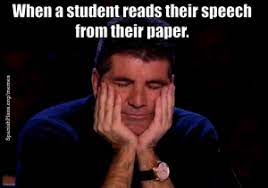
He aha te kai ō te rangatira? He Kōrero, he kōrero, he kōrero.
What is the food of the leader. It is knowledge. It is communication.
Kia ora. I hope you all had a restful weekend. This week, you need to select your speech topic (and have it approved by me) and start researching. Your draft speech should be completed by the end of next week so that you can practice it over the term break. You will be presenting your speeches in small groups starting in Week One of Term Three.
Success Criteria: I can/have...
- Select an appropriate speech topic
- Research topic using a research framework (KW Chart, T-Chart)
- Draft speech
- Create cuecards based on speech
Activities:
- Do now (Google classroom)
- Select and submit speech topic (google classroom)
- Research speech topic (KW Chart - T Chart)
Homework:
Read a book
PLAN & DO / WHAKAMAHI learning intentions:
- We are PLANNING and storyboarding our tiktok videos so that we can share these with a wider audience
-
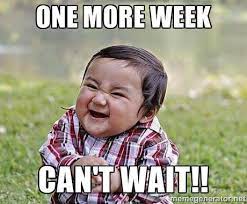
He manawa tītī
A person with great endurance
Kia ora. We have made it. Through frosty mornings and cross country we have arrived at the last week of Term Two. Yipee!! This week we are going to look at the structure of your speeches and how to use your voice and body language to deliver an effective speech. You should have completed your research so this week will be our time to draft the content of your speech. You will then have the holiday break to practice and prepare your cue cards, before your return to Term Three where you will deliver your speech in front of a small group.
Success Criteria: I can/have...
- Identify appropriate sources for research
- Record notes using a T-chart
- Use a writing framework (SEXY) to draft paragraphs
- Write an introduction and conclusion
- Prepare cue cards
Activities:
- Do now - formal language (google classroom)
- Draft speech paragraphs
- Draft introduction and conclusion
- Create cue cards
- Practice
Homework:
Practice your speech
PLAN & DO / WHAKAMAHI learning intentions:
- We are PLANNING and storyboarding our tiktok videos so that we can share these with a wider audience
-
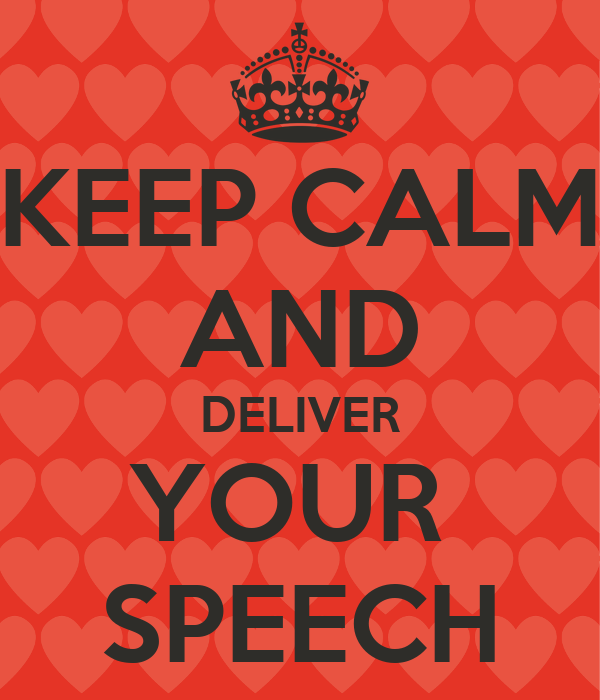
He maurea kai whiria!
Ignore small matters and direct effort toward important projects
Kia ora. I hope you all had a great break and kept warm and dry. There has been some wild weather about! This term we are going to start with delivering our speeches in small groups. We will then look at the way communities and cultures explain natural phenomonen through oral traditions (story telling, myths and legends) and have a chance to write our own explanations of events and phenomonen around us. Did you know fairy tales used to be a way of parents aerting their children to the dangers of the world around them - don't leave home without your parents because a witch might catch you, don't talk to strangers when walking to your Granny's house, don't break into other peoples houses and eat their porridge etc.
Success Criteria: I can/have...
- Deliver a prepared speech
- Use cue cards appropriately
- Use a range of tone, pace and volume
- Establish a rapport with my audience through gesture, stance and eye contact
Activities:
- Do now - formal language (google classroom)
- Record group members for speech presentations (google classroom)
- Deliver speeches
Homework:
Read a book (find a traditional fairy tale, myth or legend from your culture) -

Whāia te mātauranga hei oranga mō koutou
Seek after learning for the sake of your wellbeing
Kia ora, kia orana. Welcome to Cook Island Language Week. This week, we are going to finish off speeches (there are still a few people who need to deliver their speeches) and begin our work on this terms context - Myths and Legends. What are myths? We will be creating a shared definition of myths, exploring myths that are unique to our ow cultures and seeing how many of these myths are similar across many cultures. Finally, we will be creating our own myths.
Success Criteria: I can/have...
- Deliver an effective speech
- Discuss the purpose of myhs
- Identify and share myths from my own culture
- Describe the elements of myths
- Create my own myth
Activities:
- Do now - formal language (google classroom)
- Speech delivery (upload your spech draft to MHOL if you have not yet)
- Bus stop activity - myths
Homework:
Read a book (research myths from your culture)EXPLORE / TŪHURA learning intentions:
- We are EXPLORING myths and legends and recognising the similarities across different cultures.
- We are EXPLORING the purpose myths and legends had to cultures and analysing the effect they had
-

Ko ia kāhore nei i rapu, tē kitea
He who does not seek will not find
Kia ora. This week, we are going to continue exploring myths - who wrote them and why? What is their purpose? What do they have in common? How do different cultures explain the same idea or phenomonen? Once we have unpacked what a myth is, we will have a go at writing our own myths.
Success Criteria: I can/have...
- Discuss the purpose of myhs
- Identify and share myths from my own culture
- Describe the elements of myths
- Create my own myth
Activities:
- Do now - formal language (google classroom)
- Sharing/exploring myths
- Research Pleiades myth (individual)
- Group sharing of common features/factors in Pleiades myth
- Select own myth to explore
Homework:
Read a bookEXPLORE / TŪHURA learning intentions:
- We are EXPLORING myths and legends and recognising the similarities across different cultures.
- We are EXPLORING the purpose myths and legends had to cultures and analysing the effect they had
-
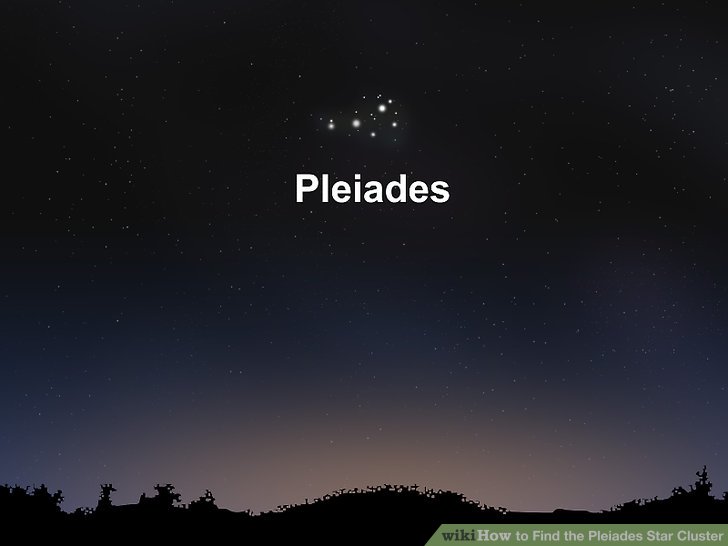
I orea te tuatara ka puta ki waho
A problem is solved by continuing to find solutions
Kia ora. This week we are going to continue looking at myths. Last week we looked at some of the myths about earthquakes that groups of people around the wor;d have created to explain the natural phenomonon. These myths are all very different, yet they still have some things in common. We are again going to work in groups to explore a phenomonon - this time we are going to focus on the star cluster of the Pleiades, which is known in Aotearoa as Matariki!
Success Criteria: I can/have...
- Discuss the purpose of myhs
- Identify and share myths from my own culture
- Describe the elements of myths
- Create my own myth
Activities:
- Do now - formal language (google classroom)
- Research Pleiades myth (group)
- Select own myth to explore
Homework:
Read a book (or a myth)EXPLORE / TŪHURA learning intentions:
- We are EXPLORING myths and legends and recognising the similarities across different cultures.
- We are EXPLORING the purpose myths and legends had to cultures and analysing the effect they had
-
Kia ora, I hope you are all well and are looking after yourselves in lockdown! This week you will be able to choose your own myth to research. This could be a myth from your own culture or think about a culture that interests you, and you can research this myth.
Success Criteria: I can/have...
I will be able to research and break down a myth of my own choice.
I will be able to explain my chosen myth and break down important parts of the myth. As well as detailing the origin, key aspects of the myth and explaining the significance of the myth.
Activities: Read through the attached slideshow below, for more information about the activity, a word bank, and research tips.
- Research a myth of your own choosing. This could be from your own culture, or a culture you are interested in.
- Practice your note-taking skills, take dot jot notes, and write a paragraph based on your notes about your chosen myth.
- You can put the information together and present it in any way that you like. You could create a poster/sideshow or something of your own choosing outlining the key information that you have compiled. If you can think of another creative way to demonstrate who your character’s is, please let us know.
Homework:
Write here... -
Kia ora, I hope you are all well and are looking after yourselves in lockdown! This week you will continue working on your myth research and presentation. Please make sure that you have uploaded your dot-jot notes to Google Classroom.
Success Criteria: I can/have...
I will be able to research and break down a myth of my own choice.
I will be able to explain my chosen myth and break down important parts of the myth. As well as detailing the origin, key aspects of the myth and explaining the significance of the myth.
Activities: Continue with your research on your myth, and complete your presentation.
- If you have completed your presentation, you can begin researching another myth, that explains the same natural phenomena as the first myth you researched for this activity.
-
Kia ora. This week, we are going to continue exploring myths, by creating our own myths. You will be able to create and write your own myth, we have various prompts available to help you with the writing of your myth.
Success Criteria: I can/have...
- Write my own myth, based on a natural phenomenon of my own choosing.
Activities:
- Read through the PowerPoint on Google Classroom
- Follow the activity on the PowerPoint, and create the outline of your myth. Alternatively, you can use the myth prompts activity attached below.
- Write your myth
- Complete Do Now activity
Homework:
Read a book, and upload your presentations to Google Classroom on the Excel Spreadsheet.EXPLORE / TŪHURA learning intentions:
- We are EXPLORING myths and legends and recognising the similarities across different cultures.
- We are EXPLORING the purpose myths and legends had to cultures and analysing the effect they had
-
Kia ora. This week, we are going to continue writing your own myths. You will be able to create and write your own myth, we have various prompts available to help you with the writing of your myth. Complete the myth writing activity on Google Classroom, and make sure you are writing your myth on the PowerPoint.
Success Criteria: I can/have...
- Write my own myth, based on a natural phenomenon of my own choosing.
Activities:
- Read through the PowerPoint on Google Classroom
- Follow the activity on the PowerPoint, and create the outline of your myth. Alternatively, you can use the myth prompts activity attached below.
- Write your myth
- Share completed myths with classmates.
- Complete Do Now activity
Homework:
Read a book, and upload your presentations to Google Classroom on the Excel Spreadsheet.EXPLORE / TŪHURA learning intentions:
- We are EXPLORING myths and legends and recognising the similarities across different cultures.
- We are EXPLORING the purpose myths and legends had to cultures and analysing the effect they had
-
Kia ora. This week, you are going to continue writing your own myths. You will be able to create and write your own myth, we have various prompts available to help you with the writing of your myth. This week you will focus specifically on writing your myth with a specific purpose and audience in mind.
Success Criteria: I can/have...
- Write my own myth, based on a natural phenomenon of my own choosing.
- Target my myth for a specific audience and purpose.
Activities:
- Rework your myth for an audience of year 5 and 6 students. Make sure your myth is appropriate/appealing for your audience
- Upload your myth to the Padelt below
- Complete Do Now
Homework:
Read a book!EXPLORE / TŪHURA learning intentions:
- We are EXPLORING myths and looking at creating a myth for a specific audience
- We are EXPLORING the purpose myths and legends had to cultures and analysing the effect they had
-
Kia ora. This week, you are going to continue writing your own myths. You will be able to create and write your own myth, we have various prompts available to help you with the writing of your myth. This week you will focus specifically on writing your myth with a specific purpose and audience in mind.
Success Criteria: I can/have...
- Write my own myth, based on a natural phenomenon of my own choosing.
- Target my myth for a specific audience and purpose.
Activities:
- Rework your myth for an audience of year 5 and 6 students. Make sure your myth is appropriate/appealing for your audience
- Upload your myth to the Padelt below
- Complete Do Now
Homework:
Read a book! -
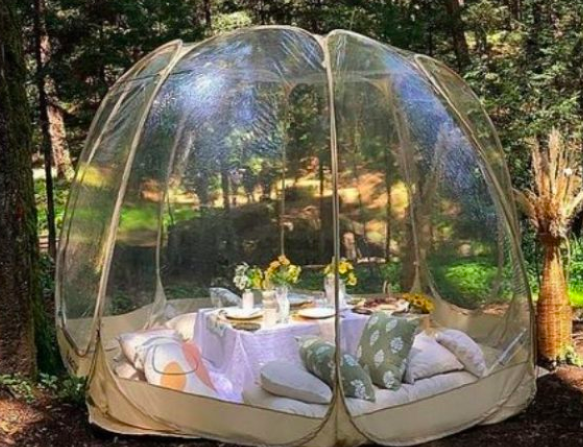
Kia ora. I hope you have all have had a restful break. It is disappointing that we can not be together in person for the start of Term Four, fingers and toes crossed that we will be able to return to the school site soon. This week, you will be focussing on your projects. I therefore have no English tasks for you other than those related to your project. Please make sure your written work reflects care in spelling, punctuation and sentence structure, and of course, keep up with your Reading+ and Cars and Stars work.
All the best and keep safe until we can catch up again in Week Two (unless you are in my LA group. in which case, I will see you on line in the next few days) :-)
Success Criteria: I can/have...
- completed and written up/presented my project
Activities:
- Project
- Project
- Project
Homework:
Project -
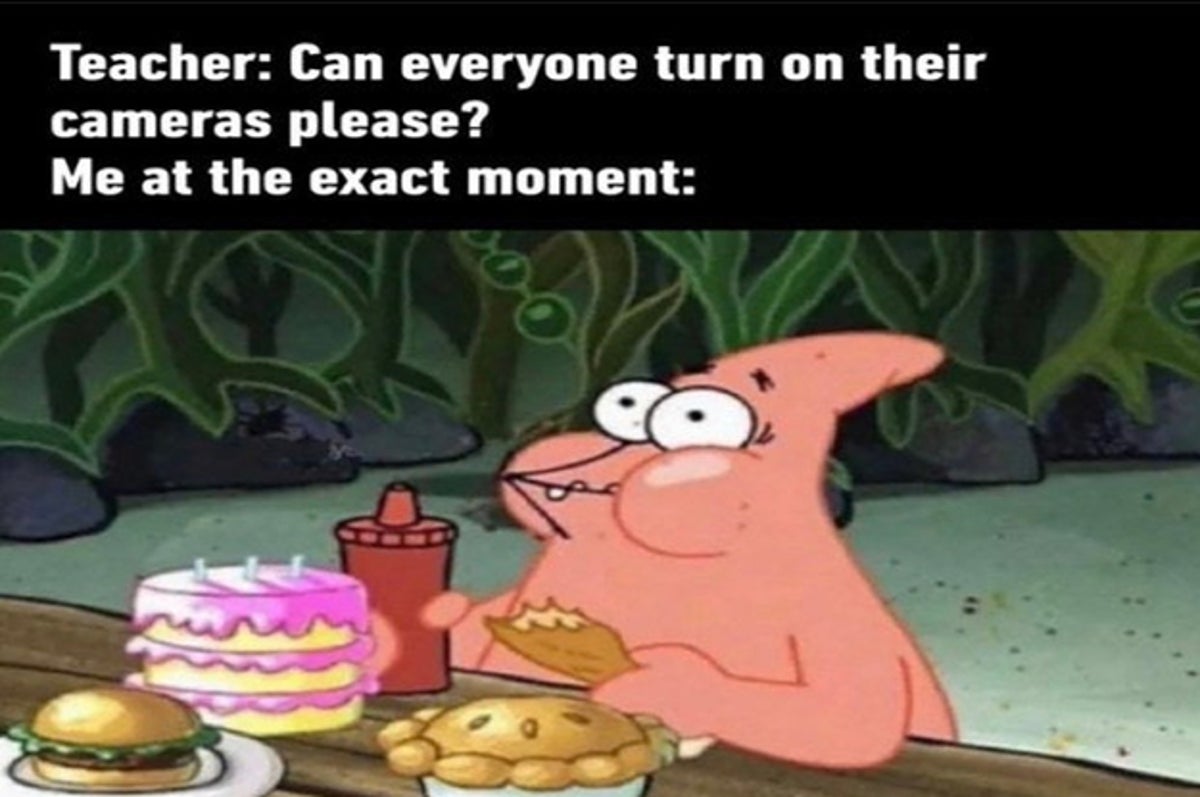
I orea te tuatara ka patu ki waho
A problem is solved by continuing to find solutions
Kia ora. I would like to challenge you all to try something really scary this week. I would like you to turn your camera's on in class so I don't feel like I am teaching (or talking to) a computer screen. I know this makes some of you uncomfortable (I know it is not my favourite thing to do) so I am giving you a link to a filter app. I have been using this one on my calls and meets and it is making me way less conscious about them. Have some fun - there are lots of filters to choose from - I look forward to teaching a class of princesses, or shreks, or even people with beards :-)
This week we are going to look at reading comprehension strategies - these are all the things you do when you are reading to get meaning from the text. There is a text and activity sheet on google classroom for you to complete.https://snapcamera.snapchat.com/ (I will add the link to the resources at the bottom of the page also).
Success Criteria: I can/have...
- Read the text
- Read the questions
- Identify key words in the questions
- Skim and scan the text for key words
- Read around the key words to locate answers
- Record answers using evidence from the text
- Check that my answer answers the question asked
Activities:
- Google Classroom (Reading Comprehension activity)
Homework:
Read a book you have access to at homeEXPLORE / TŪHURA learning intentions:
- We are EXPLORING different reading strategies and how these help us understand what we are reading.
- We are EXPLORING the different reasons authors write and recognising these audiences and purposes in our chosen texts
-
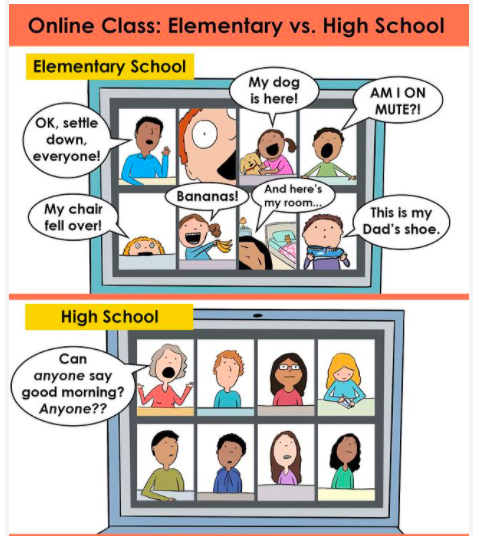 Kei ōu ringaringa te aoThe world is yours
Kei ōu ringaringa te aoThe world is yoursKia ora. This week we are going to continue working on our reading comprehension strategies. I have chosen a text for you that looks at snorkelling. This may seem odd, as our context in space, but the skills and challenges faced trying to survive under water have informed and assisted us, when we are planning on how to survive in space. How would we cope on a planet that was completely water?
Success Criteria: I can/have...
- Read the text
- Read the questions
- Identify key words in the questions
- Skim and scan the text for key words
- Read around the key words to locate answers
- Record answers using evidence from the text
- Check that my answer answers the question asked
Activities:
- Google Classroom (Reading Comprehension Activity)
Homework:
Read a book!EXPLORE / TŪHURA learning intentions:
- We are EXPLORING different reading strategies and how these help us understand what we are reading.
- We are EXPLORING the different reasons authors write and recognising these audiences and purposes in our chosen texts
-
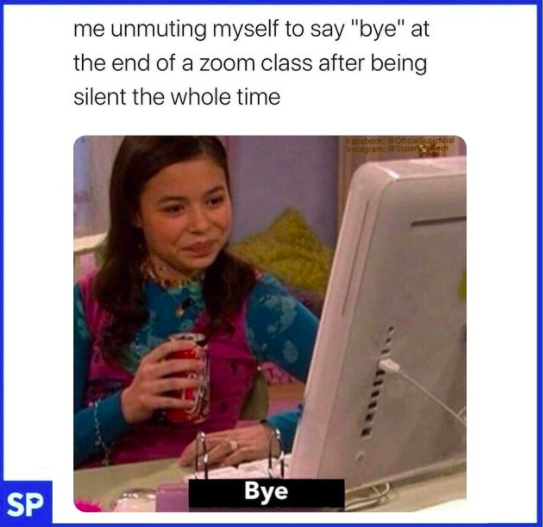
Tū whitia te hopo
Overcome your fear
Kia ora. It's week four! Hopefully we we get an idea early this week about what the rest of the term will hold for us. I am looking forward to seeing you all again in person! This week we are going to complete our End of Year writing samples. Please don't get stressed about this, the process has ben well planned and some whanau have already written their samples. Whatis important is that you take the opportunity to do your best and show what your writing is like. You have a google meet at the start of the week, and your writing assessment on Wednesday. I have not set any other tasks for you as the writing sample is your focus. If you want to do something more, can I suggest reading plus/cars and stars.
Success Criteria: I can/have...
- Attend google meets for information
- Complete End of Year writing sample
Activities:
- Writing sample
Homework:
Read a book/reading plus/cars and stars
-
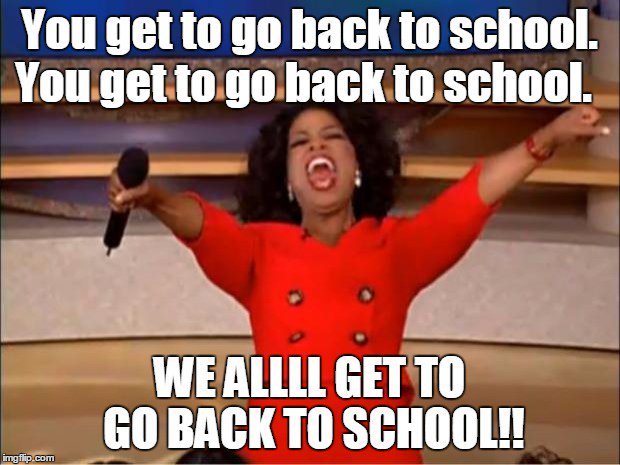
Kaua e hoki i te waewae tutuki, a apa ano hei te upoko pakaru
Do not turn back because of minor obstacles but press ahead to the desired goal
Kia ora. After so long, we are able to gather together again. I am looking forward to seeing some of you face-to-face. I know that some of you are anxious, and may take a little longer to come back to site, but I am excited to get back to MHJC and to hear what you have achived over the past few months. This week I have set reading comprehension tasks for you on Education Perfect. I would like us to be able to read novels, but am not sure we have the time (or the access to the school library) for us to make this a reality this year. We will have to be water, flowinging over rocks and adapt to the environment we find ourselves in.
Success Criteria: I can/have...
- Read the text
- Read the questions
- Identify key words in the questions
- Skim and scan the text for key words
- Read around the key words to locate answers
- Record answers using evidence from the text
- Check that my answer answers the question asked
Activities:
- Reading Comprehension (Education Perfect)
- Reading+/Cars and Stars
Homework:
Read a book (ask your parents what their favourite books were when they were your age) -
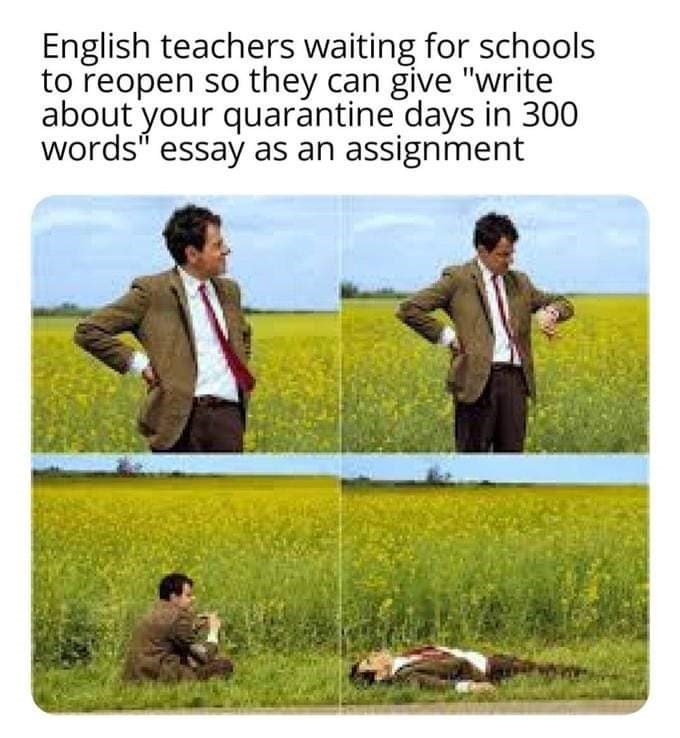
Sometimes I put these memes up just to see who's paying attention!
Kia ora. Hope you are all doing well, and keeping up with your wol. This week, you have English and Maths asttles to complete, so not a lot of work from me. I have given you a reading comprehension sheet to complete if you have an opportunity. Good luck with your reading asTTle, may the odds be ever in your favour.
Success Criteria: I can/have...
- Complete reading asTTle
- Use reading comprehension strategies to answer comprehension exercise
Activities:
- Reading asTTle
- Reading Comprehension
Homework:
Read a book -

Ehara taku toa i te toa takitahi, engari he toa takitini
Success is not the work of an individual, but the work of many.
Kia ora. Well done on competing asTTles last week. This week I have set you a reading comprehension passage where you have to draw what you read. I am looking forward to your final results.
Success Criteria: I can/have...
- Locate details in a text
- Apply these to an image
- Check that my answers are accurate
Activities:
- Draw what you read activity (google classroom)
Homework:
Read a book -
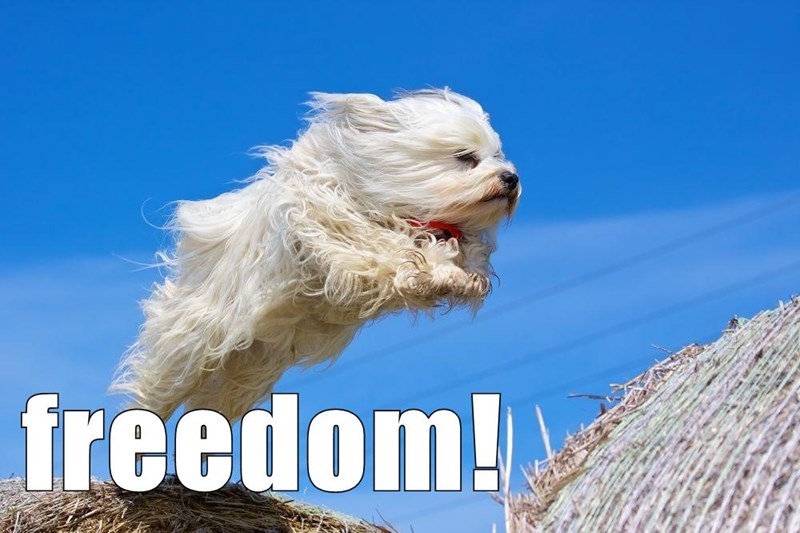
He maonga āwhā
Calm after the storm
Kia ora. A big thank you to those who have sent me your Read and Draw activity. We will be doing another read and draw activity this week........ We will also vote on the best effort last week.... who got the most detail into their image?
Success Criteria: I can/have...
- Locate details in a text
- Apply these to an image
- Check that my answers are accurate
Activities:
- Draw what you read activity (google classroom)
Homework:
Read a book -

Kua hua te marama
Something has completed a full cycle
Kia ora. You made it. Well done. What a year it has been. I have enjoyed teaching you this year and while I am not in Mountain Whanau next year, I look forward to catching up with you in DEEP, the playground, crossing Valderama Road etc.
All the best, good luck and don't forget........ You are amazing!


